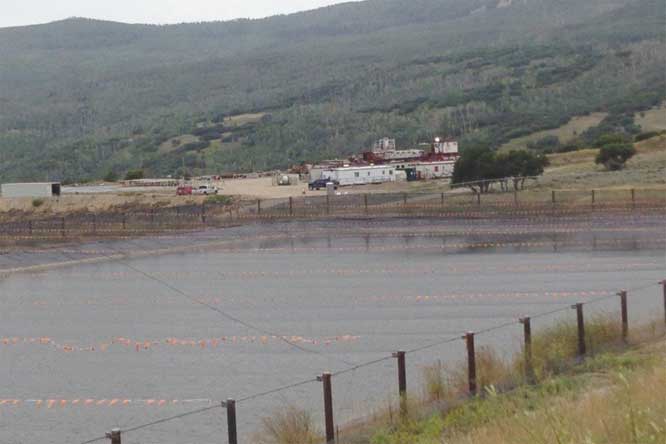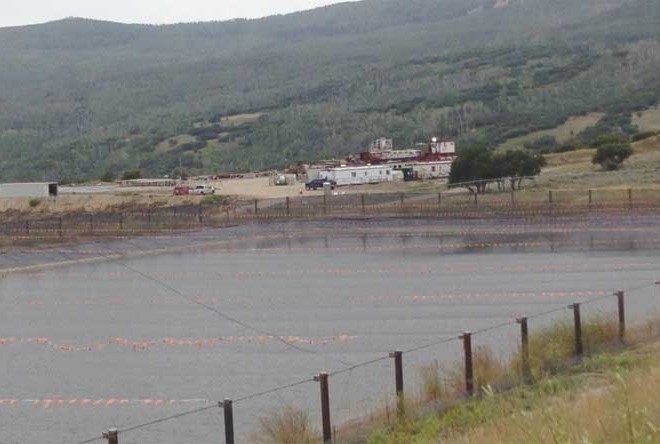A look at its scope and potential future in Gunnison County
Editor’s note: In this summer series, reporter Alissa Johnson looks at the current scope of oil and gas development in Gunnison County and its potential future.
By Alissa Johnson
There has been a lot of buzz about oil and gas wells in the North Fork Valley as federal agencies review proposals for new development. In June, the Forest Service and the Bureau of Land Management (BLM) released a draft environmental assessment for a 25-well oil and gas development project. The BLM is also completing an Environmental Impact Statement (EIS) for a master development plan for up to 146 wells in an area known as the Bull Mountain Development Unit, southwest of McClure Pass. And another project for six wells near Little Henderson Creek has been under review as well.
The proposals have raised concerns from a public worried about their proximity to the region’s organic farms, orchards, and vineyards, the produce of which makes its way to Crested Butte all summer long. And yet oil and gas development has even broader implications for the Gunnison Valley—all of the aforementioned projects and many of the existing wells lie within Gunnison County.
To put oil and gas development into perspective, the News took a step back to look at the bigger picture. What scale of development already exists? What does that mean for the county, in terms of both revenues and regulations? What kinds of conversations are taking place to ensure that oil and gas development doesn’t occur at the expense of the natural environment? And what kind of growth can be expected?
It’s a complicated picture, but one worth seeing. Oil and gas development has been an evolving part of the county’s story as officials have worked to have a seat at the table when it comes to regulation, and environmental organizations try to keep the public informed even as the sheer number of proposals may make it hard to stay engaged.
Responsible oil and gas development seen as a benefit
When you sit in a public meeting like the Board of County Commissioners (BOCC) and listen to input on oil and gas development, it doesn’t take long to notice a theme when it comes to public input. People tend to be for or against oil and gas development, and many of their comments address whether it ought to take place.
Many people ask that it be allowed because oil and gas development provides a needed resource and contributes to local economies. Others suggest that it’s time to transition to renewable resources and cite potential harm to the environment as a reason for doing so.
And yet to understand the conversation around oil and gas, it’s important to understand the historical perspective of entities like the BOCC and the philosophies that guide their decisions.
The county commissioners, for example, have traditionally taken the position that oil and gas is a mineral that deserves to be extracted from the ground and put to beneficial use. County attorney David Baumgarten explained that the commissioners also recognize a need to protect the region from potentially negative consequences.
“There is a recognition that taking [oil and gas] out of the ground can cause detrimental consequences, and it is the obligation of the person taking it out of the ground to avoid those consequences, to lessen those consequences, or mitigate those consequences,” Baumgarten explained. “That third step, to mitigate them, is only third.”

In a 2012 resolution, the commissioners stated their intent “to provide a framework for the responsible exploration and production of oil and gas resources in Gunnison County in a manner that conserves other natural resources, that is sensitive to surrounding land uses, and that mitigates adverse impacts to and protects the public health, safety, welfare and the environment of Gunnison County…”
The conversation is less about whether oil and gas development should take place and more focused on where and how it can be done responsibly.
Currently more talk than new development
Traditionally, oil and gas development in Colorado has been centered on the Front Range. Baumgarten explained that as drilling techniques have evolved, the advent of things like horizontal drilling allowed oil and gas exploration to spread up the I-70 corridor and down from northwestern Colorado to reach Gunnison County.
The Piceance Basin is a geological structure known for its reserves of coal, natural gas, and oil shale. Primarily located in Wyoming and Utah, a small part of it lies in western Colorado.
“We are at the very edge,” Baumgarten explained. “As it became more efficient to get gas out of the ground, it turns out to be a pretty rich and productive area.”
According to the Colorado Oil & Gas Conservation Commission database, there are currently 152 wells in Gunnison County in various states of activity, and 28 state permits have been issued in the last 12 months—though not all permits will lead to active wells and not all wells are actively producing. According to Hotchkiss-based Citizens for a Healthy Community, there were about four dozen active and producing wells as of a couple of months ago.
In general, a downturn in the industry has lead to a downturn in oil and gas development in Gunnison County. Neal Starkebaum, assistant director of community planning in Gunnison County, explained that currently, drilling activity is concentrated in the Muddy Creek area. And the county-employed inspector who inspects drilling operations for both the county and the state conducted zero inspections there last year.
“In 2014, there were 36 inspections… Last year one of the operators, because of the market bottoming out, shut the field and did not produce or drill one well. They shut in the field over there, so there was no drilling activity in the Muddy Creek Area,” Starkebaum said.
This year, the county has been notified of one drilling of a well and one notice of hydraulic fracturing. County manager Matthew Birnie confirmed that activity is low at the moment. “Prices are very low now. There’s very little development going on. We’ve seen permits come through, but there’s been more hoopla than actual development at this point,” Birnie said.
It’s not unusual for the level of activity—and therefore the revenues coming into Gunnison County—to fluctuate. The county receives funds through the Colorado severance tax, which is imposed on natural resources removed from the earth, and mineral leasing revenues.
The amounts vary dramatically, but isolating just how much money oil and gas exploration and development produces for Gunnison County is also difficult. According to county finance director Linda Nienhueser, the severance tax encompasses all extraction activity in the county and mineral leasing is also broader than oil and gas. In 2014, the county received $914,700 in severance tax distributions and $690,143.57 in mineral leasing revenues, but there’s no way to know how much comes from oil and gas.
“It would be good to know exactly how much is from coal, oil, gas, etc. but the formulas at the state and federal level don’t allow for that granular look at each county’s amounts,” Nienhueser said.
Proposed increase in activity
The fluctuation of the oil and gas industry and the most recent downturn don’t necessarily mean the pace of development will stay slow, according to Robby Guinn, a vice president for SG Interests, the oil and gas company that submitted the Bull Mountain Development Plan to the BLM.
The plan encompasses 19,645 acres of federal and private subsurface mineral estate about 30 miles northeast of Paonia, and includes up to 146 oil and gas wells.
The final EIS is expected at the end of the summer, and Guinn says there can be a benefit to increasing activity during a downturn.
“The number one factor is going to be commodity prices. What the EIS will allow us to do is scale development to the point where we can get costs down and make the project economic,” Guinn said. To date, SG Interests has been drilling an average of about two wells per year since it began operating in Gunnison County in 2003.
“It’s difficult to go out there and mobilize a rig and drill two wells a year and pay mobilization costs, and truthfully, in the past we have not been able to sign contracts with drilling companies and completion companies that give us any kind of break on cost because they do one or two wells and are gone,” Guinn continued.
Yet because of the downturn in the industry, those services may be available at more affordable rates—though knowing exactly how much is a challenge. “This is a time when we like to get busy, but I can’t tell you how many wells we’re going to drill because it’s a function of the economy on each well.”
The actual pace of development will depend in large part on the release of the final EIS and on market forces. In the meantime, local and regional environmental organizations are weighing in on the discussion.
Next week we’ll take a look at trends in those oil and gas development discussions, and learn how Gunnison County got a seat at the table when it comes to permitting and regulating wells.
 The Crested Butte News Serving the Gunnison Valley since 1999
The Crested Butte News Serving the Gunnison Valley since 1999



